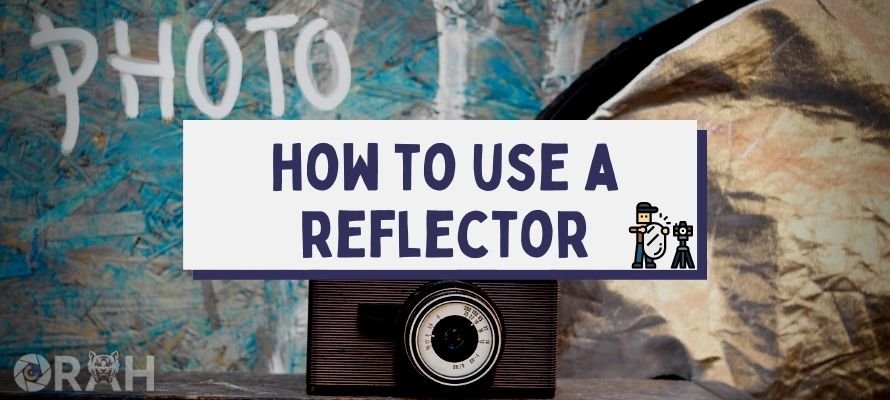
It is safe to say that if you have ever found yourself in a situation where photographers are doing what they do best, you may have seen the use of reflectors. These are essentially giant improvised flat surfaces that can reflect the light in the direction you want.
I know it might seem overwhelming, and you might be asking yourself just how to use a reflector, but in reality, it is one of the easiest things to do, and the best part is that it makes your photography look a lot better, and the same goes for shooting videos.
However, the purpose of this article is to start helping the photographers and videographers have a basic understanding of how they can use reflectors to make their photography a lot better. I am going to teach you some of the basics, and you will be able to learn all these in no time.
Why You Should Use Photography Light Reflectors?
Now, when you are talking about getting started with using a light reflector, honestly, there are several reasons why you should do that, to begin with. A lot of the times, people just don’t pay attention to these at all. However, photography has a lot of uses for these seemingly simple tools.
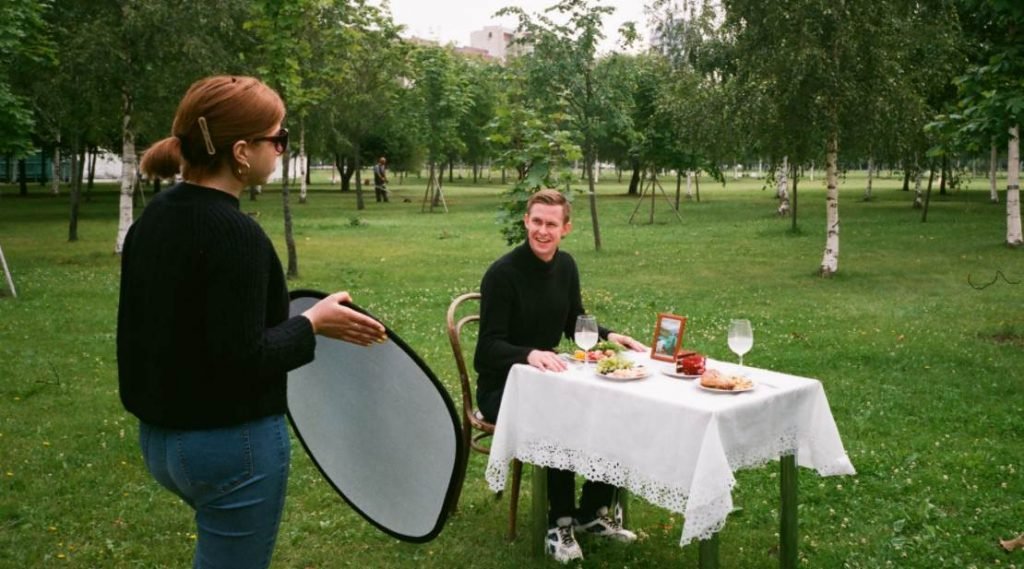
That is why I am mentioning a few reasons why you should use light reflectors in photography, and by extensions, you can use them in videography too.
- Eliminating Under Eye Shadow: Under eye shadow is one of the worst things you can experience in pictures, and thanks to a reflector, you can get rid of it with ease.
- Hair Lighting: I know it might sound strange, but hair lighting is important when you are taking pictures, as it adds a layer of depth to your photos. You can get that using reflectors with ease.
- Helps with the Backlighting: If you are shooting in harsh lighting conditions, the backlighting can be your enemy, but with the right use of a reflector, you can deal with that.
These are just some of the ways you can use a reflector but don’t worry, there are countless more ways, you just have to invest in one, and you are sorted.
Different Types of Reflectors For Photography?
Now, it is important to know that different types of reflectors are used in photography. Differentiated using their size, shape, and shades. We are going to look at a few examples.
1- Reflector Sizes
The first thing that you must understand is that the reflectors come in several sizes. You can make them as big as you want or as small as you want, but the most common reflectors start from 20-inch and go all the way to 50-inch.

Although they are lightweight, you will need someone to hold the reflector for you because you cannot hold the camera and the reflector at the same time. You could spend more money and get a stand for these reflectors too.
2- Reflector Shapes
When you are in the market looking for new reflectors, you have to be sure about the reflector shapes because it is going to be an important thing. The most common reflector shape comes in a circular shape, but you also can get hexagonal reflectors.
The purpose here is to be sure that whatever shape you are getting is useful for you. Because after all, what is the point of getting something that is not practical for you. So, it is more about how you want to use the reflector because, without that, you might not be able to get the results that you want.
3- Reflector Colors
Now, this is something that a lot of people don’t know, but reflectors normally come in different colors. Silver is the most basic reflector type that is used when you want to make the light tone look on the cooler side. Golden is used for outdoor photography when you want to mimic the warm light from the sun.
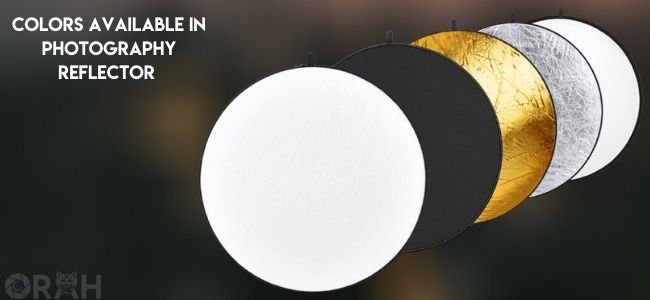
Black is anti-reflective, so it is used for casting shadows, and then you have the white, which does not reflect as much light, but if you are already in comparatively better-lit lighting, you can rely on this color to get better results.
These are some of the most common types of reflectors that you can find in the market, and they work well.
How To Use Reflector In Photography?
Now, we are going to start looking at just how you can use a reflector in photography. Remember, the same tips can be used if you are shooting video, so do keep these in mind.
1- Use A Reflector With A Key Light
Now, the thing that you must understand is that key light is going to be important in every photography setting, but using a reflector with such lighting is going to be great. You will easily be able to take great-looking photos with a reflector combined with a key light.
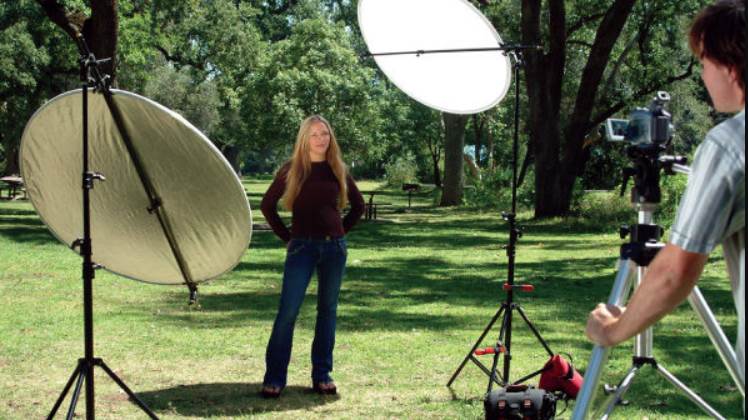
Of course, it might not be easy in the beginning, but you can easily make the most of the situation after you have learned the process. Once you know how to use key lighting in tandem with a reflector, you will be able to take great photos without having any problems that could come your way.
Still, I would suggest you do some trial and error and see just how you can make most of a reflector, and make your pictures look good and professional, at the end of the day.
2- Natural Light Vs. Artificial Light?
A lot of the times, people think that reflectors are only used in artificial settings, where lighting is coming from the key light and other lights, but that is not the case. But first, you have to understand that any light that is coming from a natural light source is going to be considered natural light.
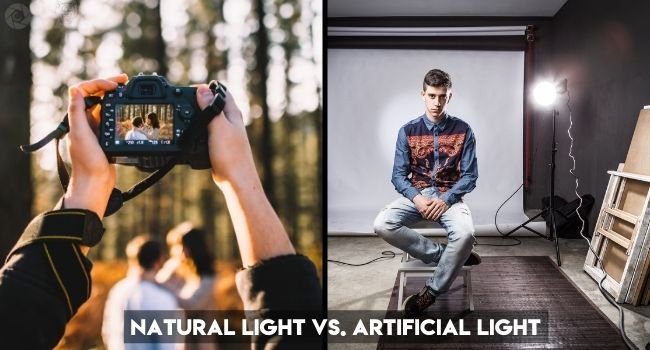
All the light that is coming from an external source is going to be artificial. Now, as far as the use of reflectors is concerned, I would suggest that you are using these with both lightings first. Simply put, you have to get the lighting on the subject in the best way.
Thankfully, a good reflector is not going to create any issues. It might look very overwhelming in general, but once you do it out and use it properly, you would be just fine whenever you are talking about taking photos. Reflectors can be your best friend when used properly, and that is what makes them so great.
Related reading: What Is Bokeh In Photography?
3- Who Holds The Reflector?
Of course, when you are taking photos, you have to start wondering just who is going to hold the reflector. Now, this is something that is going to vary from situation to situation. However, a photographer cannot do both, so someone else has to hold the reflector.
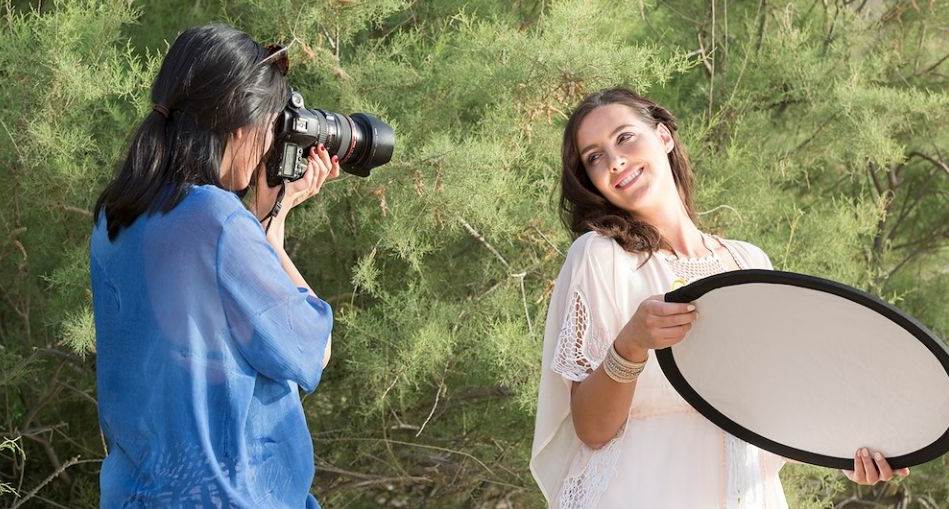
Now, there are many situations in which the subject who is being photographed holds the reflector with their hands, especially if it’s just a headshot.
However, if it’s a full portrait, then someone else is going to hold the reflector. In most cases, the reflectors are installed on holders, as well. But that is not as practical because there are times when you have to move around the reflector to get the perfect results.
4- Black Reflector To Create More Dramatic Shadows
A lot of the times, you will get to see reflectors that are going to be available in several colors, with black being one of the very popular ones. However, a black reflector is not necessarily a reflector, it is more of an anti-reflector.
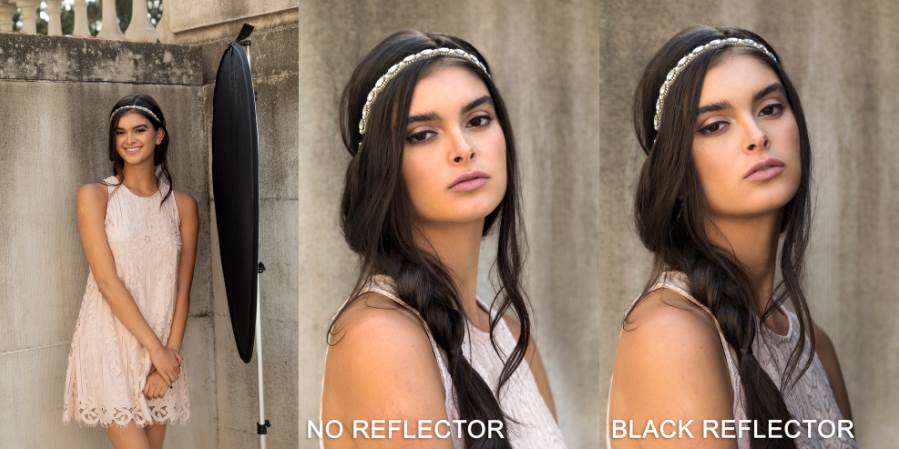
The purpose of this color is to allow the photographer to cast more shadow on the subject in certain scenes where there are more shadows required.
Therefore, if you want to create a dramatic scene that is shrouded in shadows, using the black part of the reflector is going to take you far, and will make the photos look excellent in their dynamic range as well.
5- Reflector To Block Light
Now, this is something that often gets confused with the black side of the reflector. The black side is anti-reflector, it essentially is used to cast a shadow. But what do you do when you don’t want to cast a shadow but at the same time block light.
Well, this is when you are looking at the white side. The white is good because it is not as reflective, and it blocks a lot of light with ease. So, if you are in a situation where there is a lot of light that is falling on the subject, using the white side can help you a lot in making sure that the light is blocked with ease.
6- Use A Reflector For Fill Light
More often than not, you find yourself in a situation where you just want to be sure that the scene has more light than the light that is available. In such situations, you start using a reflector to fill the light. This is very common in the photography world, especially when there is not a lot of external light source available.
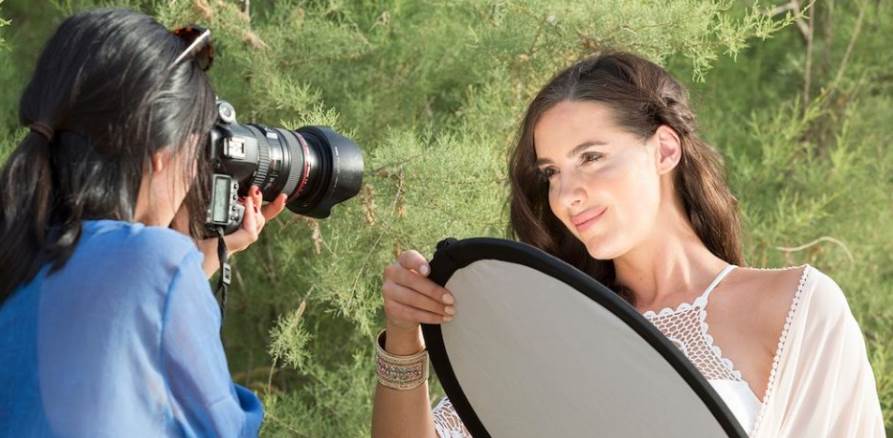
With reflectors, the light just bounces off the reflector and fills the scene. Allowing to have more filling light with the help of a good reflector. Remember, the larger the surface of the reflector, the more you are going to get as a result. So, always keep that in mind.
7- How To Find The Reflective Angle
There are a lot of times when you might be facing a situation where you cannot find the reflective angle. Working with reflectors is one thing that I never really like, but the good news is that if you are being careful about it, you can make the situation work for you with ease.
Therefore, if you truly want to be sure that you can take great reflective angles, be sure that you angling the reflector until you find the perfect angle. This is not going to be that easy, but if you are being careful about it, you can make the most of the situation with ease.
Suggested reading: What Is White Balance In Photography?
8- Measuring The Right Distance For Your Reflector
I know this might sound like something very common, but the thing that you must understand here is that when you are in the process of taking photos and using a reflector for that, you will have to understand that you will need to measure the right distance.
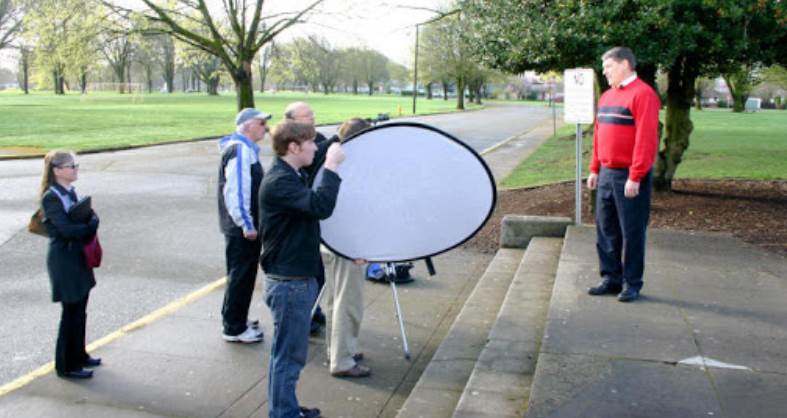
I have seen so many pictures in which things got out of hand because a good distance was not measured. The best part here is you can see the difference if you are using a mirrorless camera or an EVF of a normal camera.
That way, you will be able to tell what the perfect distance is by just looking at how the scene changes if you bring the reflector close or far.
However, when taking a shot, be sure that you are being fully aware of this, so you do not end up getting the picture wrong. We want to be sure that we are getting the perfect shot with ease.
Frequently Asked Questions (FAQs)
Q1- How does a reflector work in photography?
Answer: This question has been asked numerous times. A reflector is essentially a reflective material that reflects the light at the desired angle and allows to cover proper areas.
Q2- How do you use a disc light reflector?
Answer: Using a light reflector, regardless of the shape, is as easy as anything gets. You just have to angle the reflector against the light, so you don’t have any issues finding the right angle.
Q3- How do you use a reflector collapsible light?
Answer: Some lights come with collapsible reflectors, these are great in the studio environment, and the moment you open the light, the reflectors are opened too.
Q4- Can I use foil as a reflector?
Answer: Yes, if you are looking for a quick hack and you want to take photos in-door without having to spend a lot of money, you can use a foil as a reflector. However, make sure that the foil’s surface is as flat as possible.
Q5- How do you make a reflector?
Answer: Making a reflector on your own is not that difficult. You just need a surface that can bounce the light rather than absorbing it, attach it to a firm surface, and you are good to go.
Q6- How do you hold a reflector without an assistant?
Answer: Holding a reflector without an assistant is completely possible. If you are taking a headshot, make the subject hold the reflector, so the light bounces on their face and their head. However, you can even mount some reflectors on proper stands if you want to have good control over what you are doing.
Q7- Which is the best reflector of light?
Answer: When you are talking about reflectors, they all do a varying degree of work; but the brightest one happens to be silver, as it manages to reflect the most light. However, for outdoor shoots where you want warmer light, you go with the golden reflector.
Wrap-Up:
A lot of the times, using a reflector is something that is going to be confusing for a lot of people, but you must know that the process is not that difficult, to begin with. If you truly want to be sure that you are doing everything possible to get the right angles, a good reflector is important.
Simply put, a reflector is certainly something extremely useful, and without a reflector, we are not going to suggest you go for it, in the first place. Thankfully, you can get started with a reflector, and keep trying to get your control, and you will do just fine. It is not as difficult, so you will do just fine.